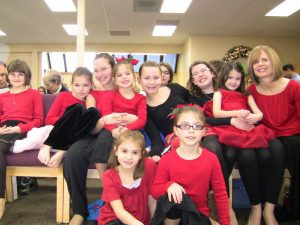When preparing to minister through dance, many questions arise about what to wear. Is stage attire suitable for the sanctuary? Do layers equate to holiness in dance? Understanding what it means for dance to be set apart for the Lord significantly impacts wardrobe choices.
 Simple and modest dance attire for worship
Simple and modest dance attire for worship
Initially, my approach to Praise Dance Attire was straightforward. As worship, clothing should be appropriate for Sunday service—modest, flexible for movement, and beautiful. I sought skirts, flowing pants, and tops in suitable colors from regular stores, always looking for everyday clothes that could double as dance wear. This simple approach focused on comfort, modesty, and worshipful presentation without specialized garments.
 Flowing praise dance attire with overlay
Flowing praise dance attire with overlay
Connecting with the wider praise dance community and receiving formal training broadened my perspective. I admired the flowing dresses, elegant overlays, and culottes worn for modesty and enhanced movement. These garments, designed specifically for worship dance, emphasized beauty and reverence for God’s glory. I began exploring specialized websites for praise dance attire, appreciating the artistry and intention behind these creations.
However, as part of a new church plant where dance in worship was less common, wearing elaborate liturgical dance attire felt out of place. A long white dress with sequins could appear as a costume, creating a sense of performance rather than worship within the congregation. This shift prompted a re-evaluation of appropriate praise dance attire in different contexts.
Reflecting on these questions, I recalled a conversation with Leslie Passerino, a respected dance minister. She shared an insightful article about her own journey in seeking divine guidance on this topic. Her experiences resonated deeply, offering valuable insights into the heart of choosing praise dance attire. Leslie’s story emphasizes seeking personal revelation from God, rather than solely relying on external standards.
Leslie recounted her two-year quest for the “perfect garments,” a search that yielded no inspiration through prayer, revelation, or dreams. This fruitless search led her to question her calling as a dance minister. Yet, the Holy Spirit reaffirmed her path, highlighting modesty as a key principle but revealing no specific garment style. Her relentless pursuit of the ideal attire became a source of frustration, obscuring the true purpose of dance ministry.
Through this journey, Leslie discerned crucial principles:
- Garments are important but NOT vital: The focus should remain on worship and ministry, not solely on attire.
- Garments should fit with your church, your calling, and your anointing: Context is paramount. What resonates in one setting may not in another.
- Garments should not be about ME but about HIM: Attire should facilitate worship and not draw attention to the dancer.
Leslie realized her focus had become self-centered, requiring repentance and a shift in perspective. After a period of reflection, the Holy Spirit guided her through a series of questions:
- How is your church? Answer: Cutting edge, trendy, prophetic, caring, and focused on emotional healing.
- How is your city? Answer: Diverse, international, trendy, open-minded, vibrant.
- What kind of clothes did Jesus wear during his ministry? Answer: Simple, likely made of good fabric, but not royal or ostentatious.
- Why simple attire for Jesus? Answer: Simplicity allowed people to approach Him, to feel comfortable and receive healing and salvation. Royal attire might have created distance.
- What does this mean for your dance attire? Answer: To be authentic, to connect with people, to express God’s love through movement in a way that is accessible and relatable.
Leslie’s revelation led her to conclude that in her context, elaborate, kingly attire was not appropriate. Instead, simple, unassuming clothing that would not distract or create a barrier was the answer. Her experience underscores that appropriate praise dance attire is not universal; it is deeply contextual and personal.
While flowing garments and specialized praise dance attire are beautiful and meaningful in many settings, Leslie’s story reminds us to seek God’s personal guidance. Learning from experienced dancers and ministries is valuable, but it should not replace seeking direct revelation from the Lord about what He desires for your specific ministry context.
What are your thoughts on praise dance attire? How does the nature of your church and community influence your choices? What has the Lord revealed to you about what to wear when ministering in dance? Do you adjust your attire based on different ministry contexts? How does scripture inform your understanding of appropriate worship dance attire?
